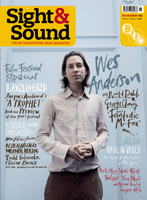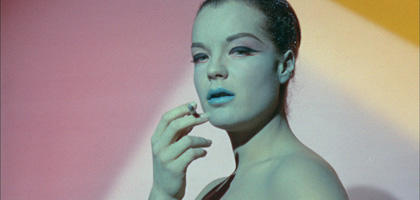Primary navigation

France 2009

Reviewed by Catherine Wheatley
Our synopses give away the plot in full, including surprise twists.
A documentary detailing the attempts of legendary French director Henri-Georges Clouzot (Les Diaboliques, The Wages of Fear) in the early 1960s to film his long-planned project Inferno, a study of jealousy starring Romy Schneider and Serge Reggiani. Granted an unlimited budget by his American backers Columbia, Clouzot began an unprecedented process of technical experimentation, with the intention of creating an innovative film language based on the sonic and visual art of the period. But when filming commenced, the production started to unravel; the director was difficult and indecisive, causing delays in the shooting schedule; Reggiani walked off set, and the final blow came when Clouzot had a heart-attack. The project never reached fruition. This documentary traces its history through interviews with key collaborators, and recreates some scenes using archive footage and contemporary re-enactments.
This dazzling evocation of what may be one of the greatest films never made has at its heart two extraordinary men. The first is legendary director Henri-Georges Clouzot, the creative force behind some of cinema's most enduring masterpieces (Quai des Orfèvres, Les Diaboliques, The Wages of Fear), dubbed 'the French Hitchcock' by the popular press and berated by the nouvelle vague gang for his exacting precision and infamous dedication to the preparation of his shoots. Driven to the verge of madness by his passion for film (although this documentary makes no mention of it, he spent most of the 1930s in institutions, a period he obliquely referred to as "a depression"), Clouzot was perhaps the first of the Kubricks, Coppolas and Gilliams: those film-makers whose commitment to their art knows no bounds, brooks no compromise and is often highly destructive.
The second character here is Serge Bromberg, whose name may be unfamiliar to cinephiles but whose work is unlikely to be: he is the restoration specialist responsible for bringing countless buried treasures to light (his preservation company Lobster Films holds more than 20,000 endangered films); and in his own way he is as fanatical as Clouzot. So one can imagine his delight on discovering, through a chance encounter with Clouzot's widow Inès, that some 185 cans - or 15 hours - of Clouzot's notorious unfinished 1960s work Inferno were ripe for the picking. The resulting film, Henri-Georges Clouzot's Inferno, is the product of long hours spent by Bromberg and co-director Ruxandra Medrea Annonier sifting through the material in order to offer audiences a glimpse of what might have been - and an insight into why it all went wrong. The implicit answer is that Clouzot, working with an unlimited budget from backers Columbia and self-producing the film, became overwhelmed and lost his way: even before lead actor Serge Reggiani packed up and left the set, driven to exhaustion by the director's demanding schedule and general control-freakery, the shoot was days behind schedule and the crew were at a loss as to what was going on. The heart-attack suffered by the film-maker that eventually shut down shooting seemed to be his body's way of telling him what everyone else had been trying to point out for weeks: it was time to give up.
It's a fascinating story and its neatly understated telling by a series of key collaborators including the actress Catherine Allégret and director Costa-Gavras (who worked as first assistant on Inferno) would make for a compelling watch in itself. But, unusually for a documentary, it's the film's aesthetic revelations that offer its real pleasures: Clouzot's highly ambitious vision for his tale of consumptive jealousy melded the progressive artforms of the mid-1960s - such as op art and electro-acoustic music - with an innovative set of filming techniques (including the use of colour inversion) to startling effect. The reams of experimental footage featuring pseudo-psychedelic visions of the film's star, the 26-year-old Romy Schneider, posing and preening even as she is coated in cellophane and olive oil, are an utter joy to behold. No less so the pieced-together footage of the film itself, overdubbed and augmented by readings from actors Bérénice Béjo and Jacques Gamblin.
As Henri-Georges Clouzot's Inferno draws to an end it leaves its audience sorrowful for what might have been; but hungry, too, for more from the reservoir of test material that Clouzot created. Hours could be spent marvelling at the grace and beauty of the radiant Schneider, shimmering and shifting before our eyes, smoking and flirting with her co-stars and the camera alike, breaking down before Clouzot's demanding gaze. A tantalising glimpse of the gems that didn't make it into Bromberg and Medrea's final cut comes in a small window that runs over the closing credits, at the end of which special thanks are given to the lift in which Bromberg met Inès Clouzot "for breaking down" and providing the opportunity for this marvellous work to be born. One can only second the sentiment.